Ancient Agora of Athens
We had so much fun at our Acropolis Treasure Hunt last month that we called Charis (guide and hunt creator) and asked her to show us around the Ancient Agora of Athens. It was a beautiful, warm day - perfect weather for walking around this fascinating place. Here are some highlights from our tour of the Agora.
Temple of Hephaestus
This temple dedicated to the god of fire, blacksmiths and craftsmen is at the western end of the Agora, up on a hill. It was built around the same time as the Parthenon (mid 5th century BCE) in a similar design, though slightly smaller. But the Temple of Hephaestus is significantly more intact than the Parthenon because it remained in continual use. In the 7th century CE it became a Christian church dedicated to St. George. In the 19th century it was used briefly as a burial place, and then as a national museum housing artifacts from the Acropolis. In 1934, after nearly two and a half millennia of use, the Temple of Hephaestus was finally “retired” as an ancient monument and archaeological site.
We couldn’t enter the temple (neither could the ancient Greeks), but we could stand much closer to it than we could to the Parthenon. Some interesting features of the temple included the door installed by the Christians (the church entrance had to face west); the fluted columns smoothed by fire damage; the black crust that formed as pollutants in the air reacted with the marble; and the scar left by a cannonball striking one of the columns. I loved the view from the temple, looking east across the Agora to the Acropolis.
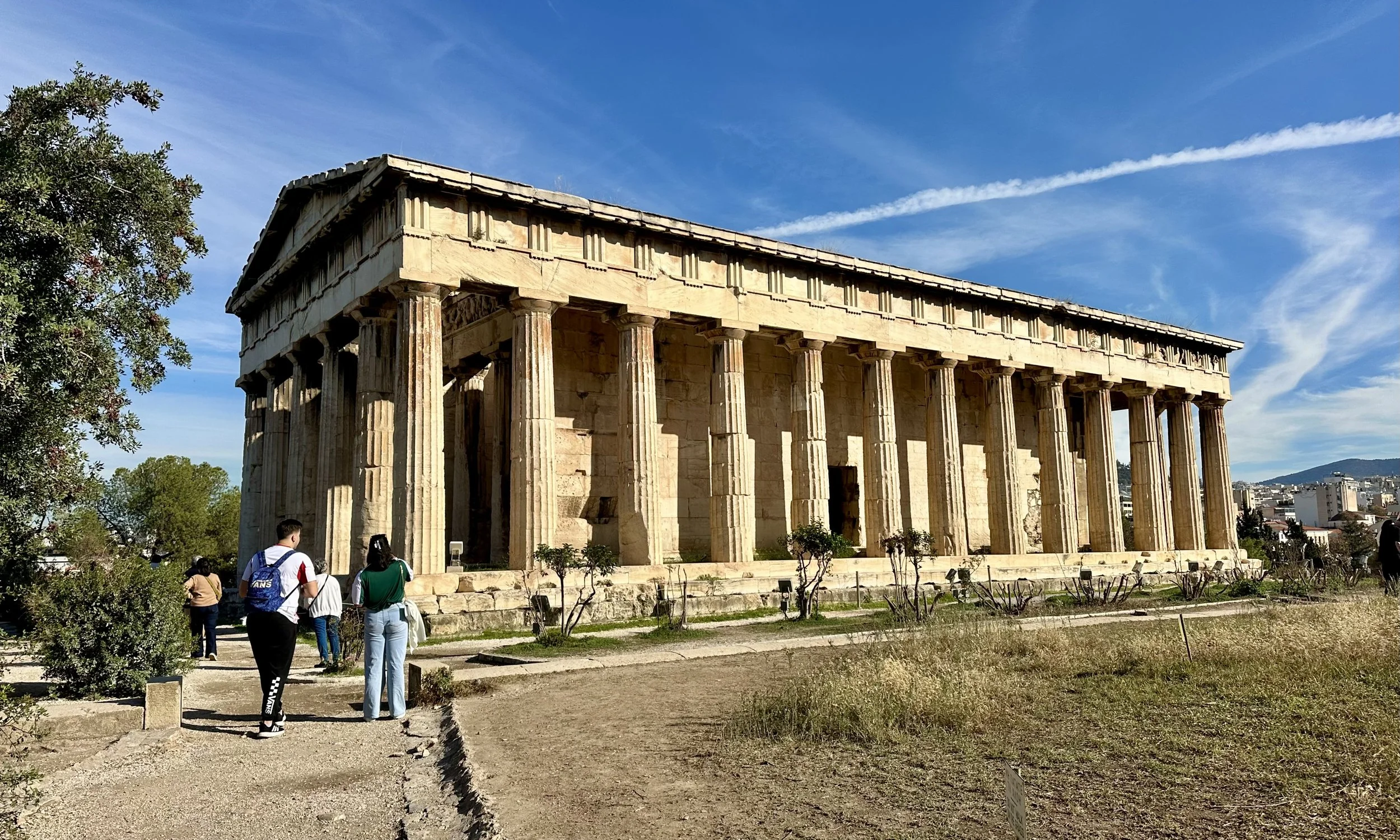
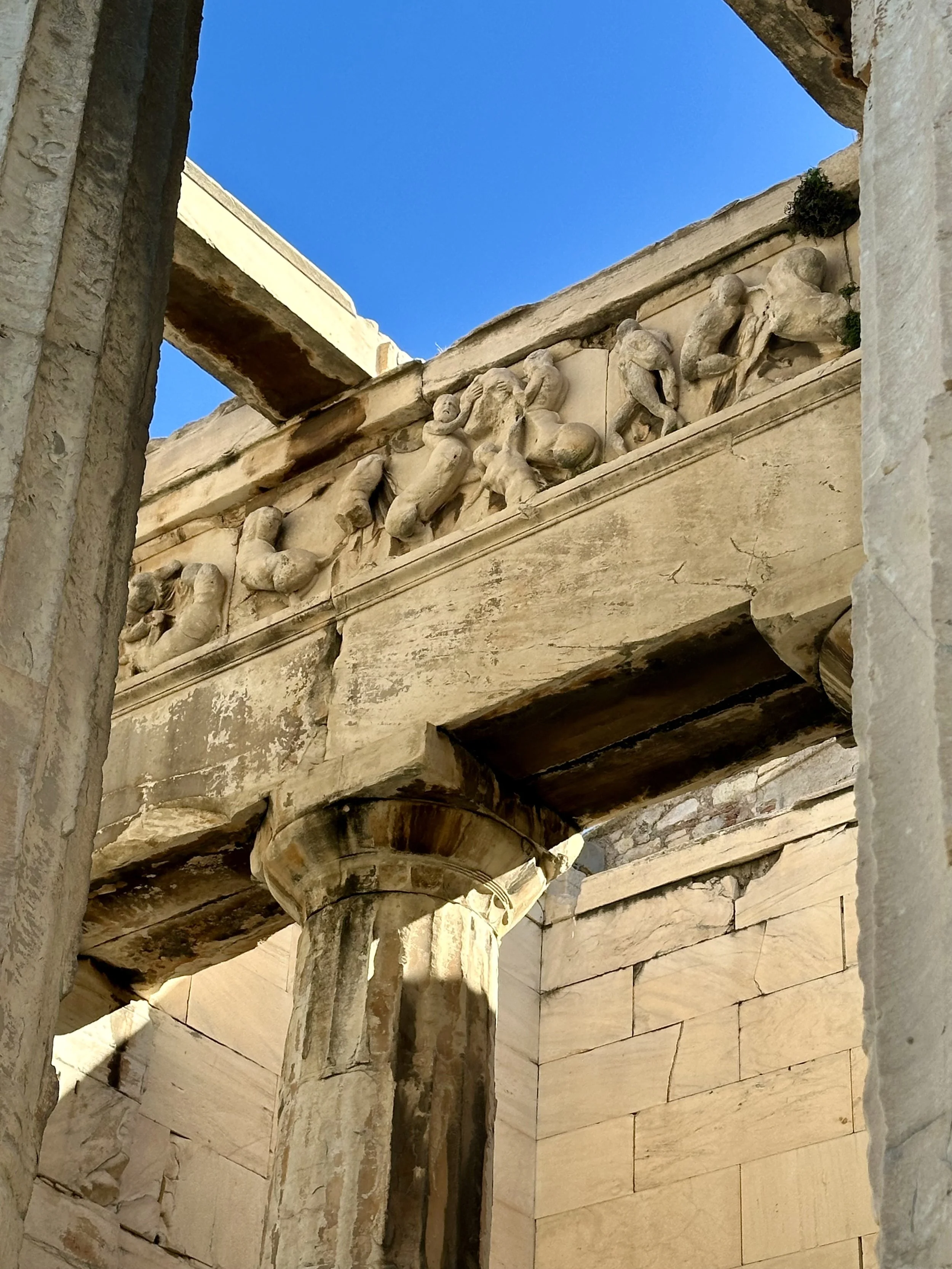


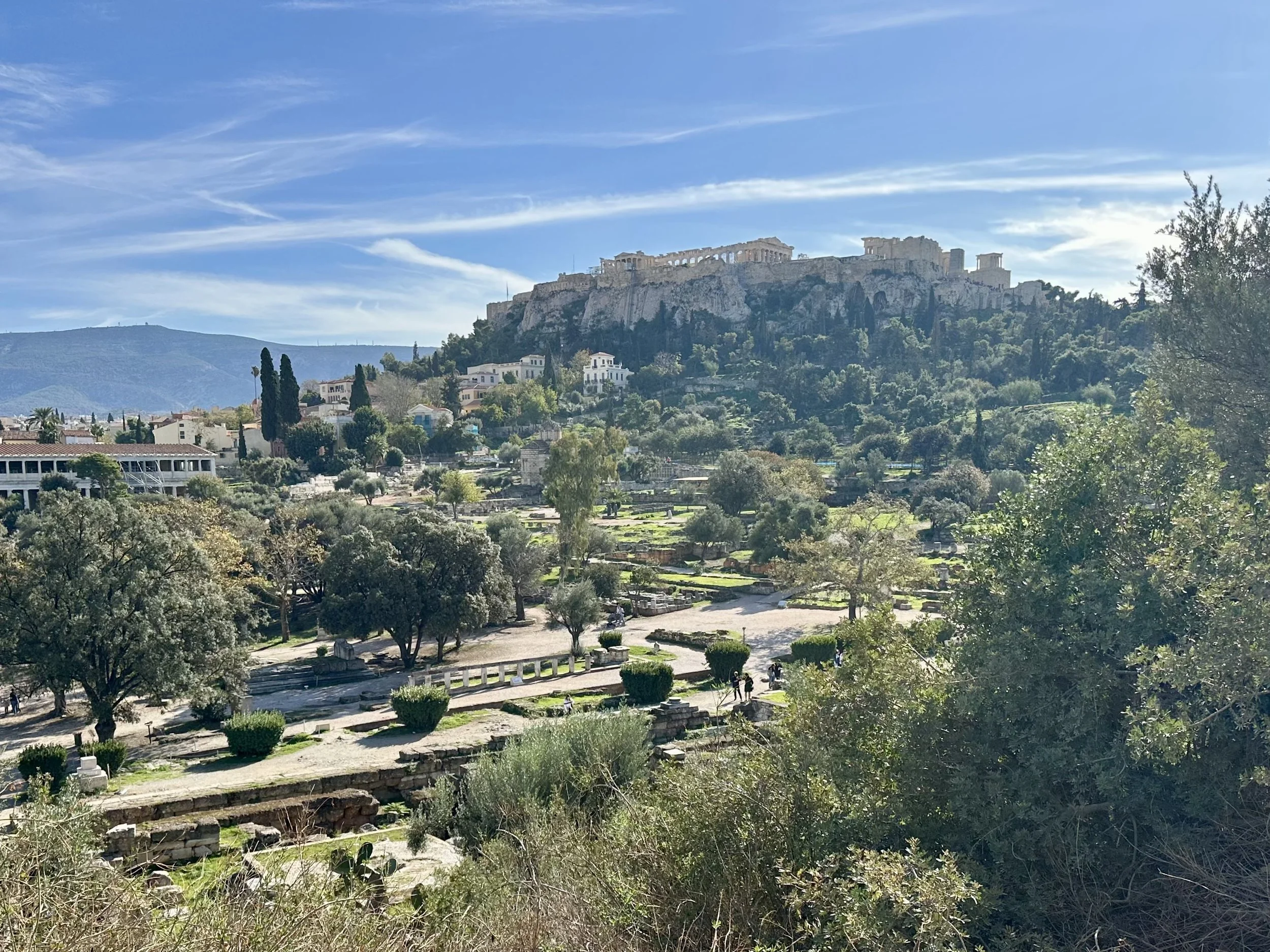
The center of the action
“Agora” is the Greek word for gathering place. Ancient Athenians came to the agora for many reasons.
Religious worship - Families came to make an offering to a god at one of the five temples, and to celebrate festivals with processions.
Socializing and teaching - Stoas (covered walkways lined with columns) were popular places for discussion. Socrates spent much of his life in the stoas of the Agora, talking with his students, and refining his method of questioning and debating to sharpen critical thinking.
Politics and justice - Under Athenian Democracy, male citizens gathered at the Agora to debate and vote; a 500-member council chosen by lot handled daily affairs 24/7; and juries chosen by lot heard cases and issued verdicts. Socrates was tried, imprisoned, and executed at the Agora.
Commerce - Merchants sold their wares in the market. Marble statues were a big business here.
Entertainment - Concerts and plays were performed in a luxurious theater.
Most of the structures in the center of the Agora had crumbled or been destroyed, with only foundations and partial walls remaining. But there were enough clues from artifacts and writings for archaeologists to deduce what happened here. It was awesome to be in the very place where 2,500 years ago, citizens in the first democracy took an active role in their government.

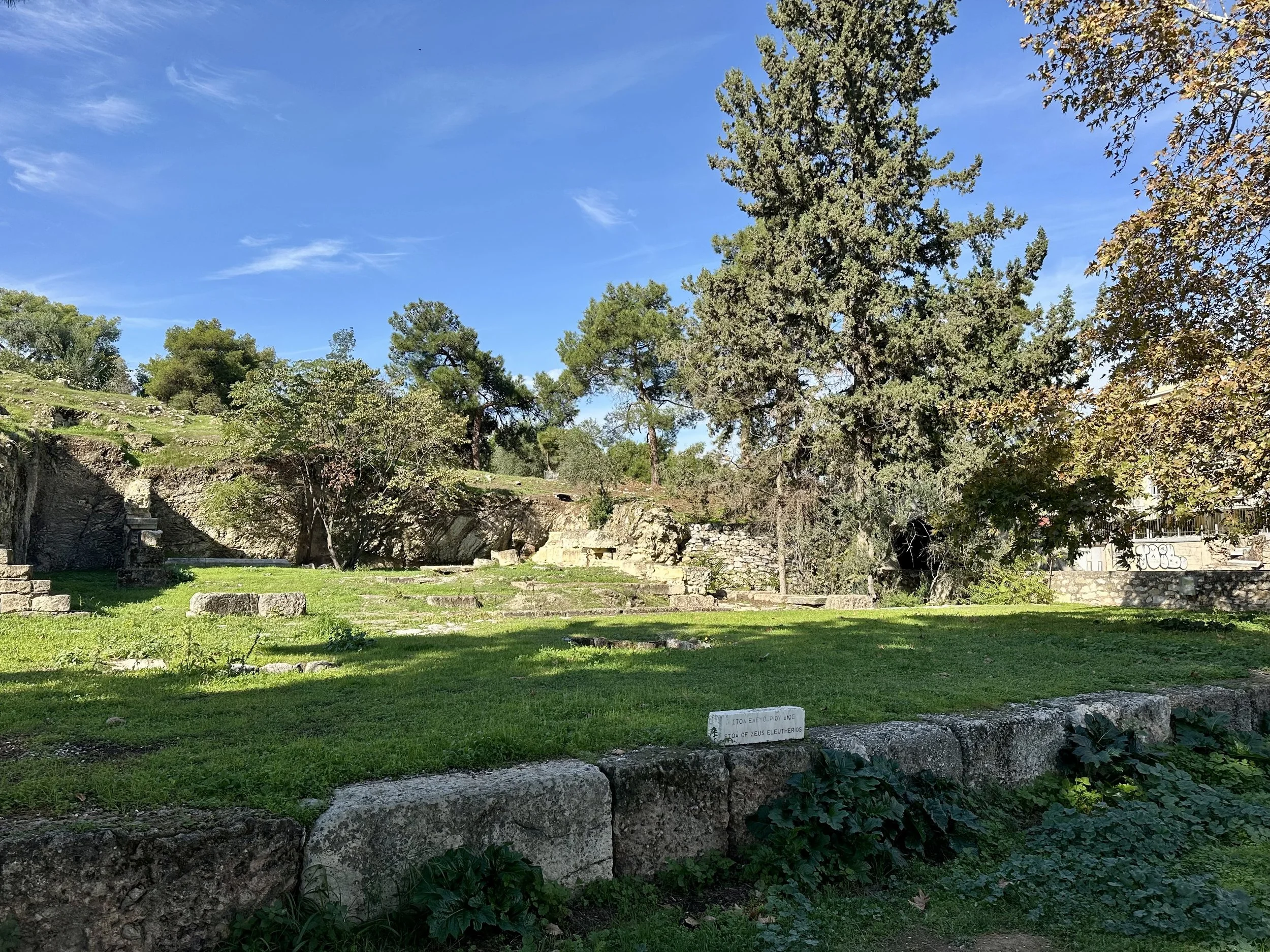
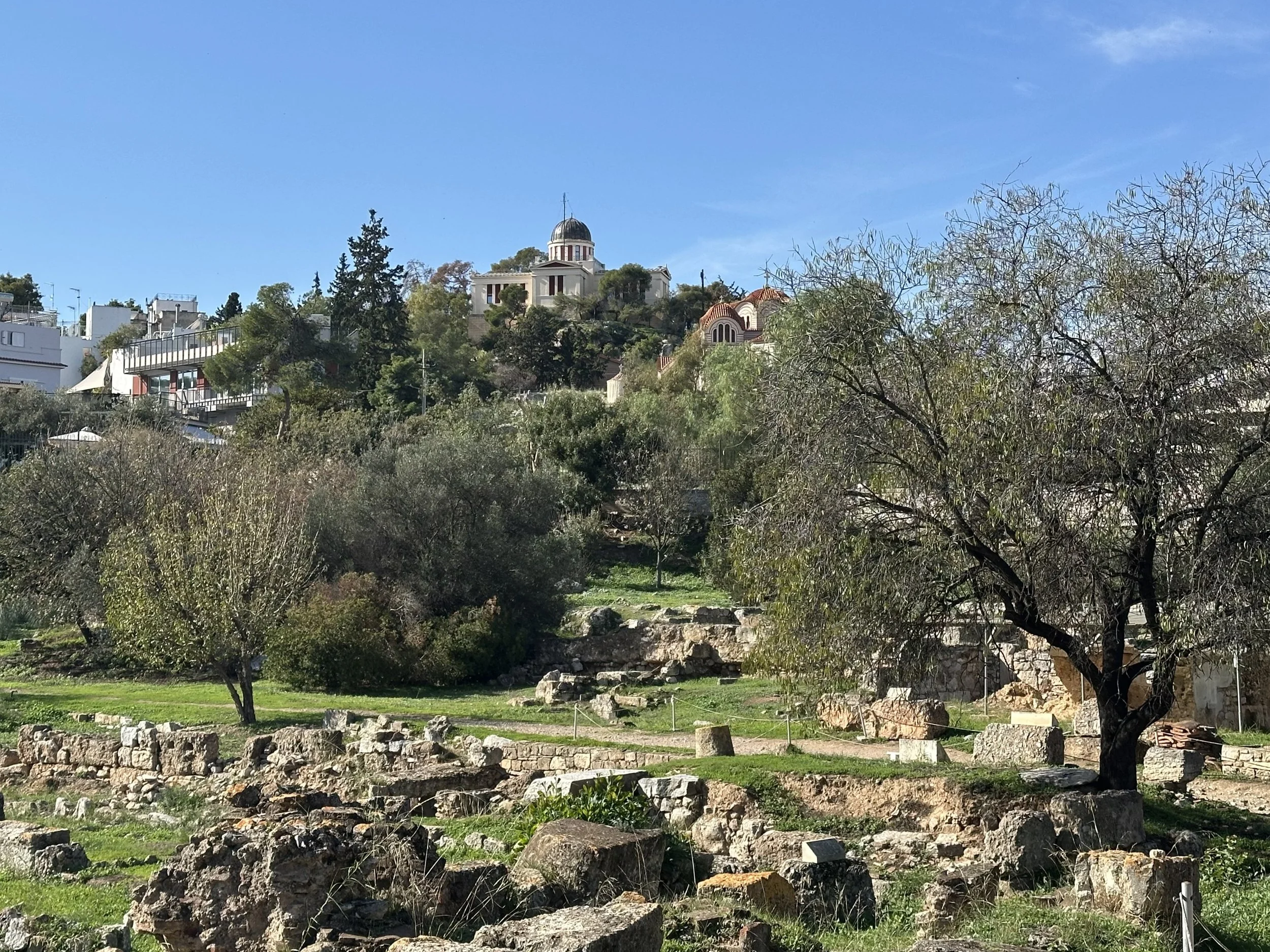
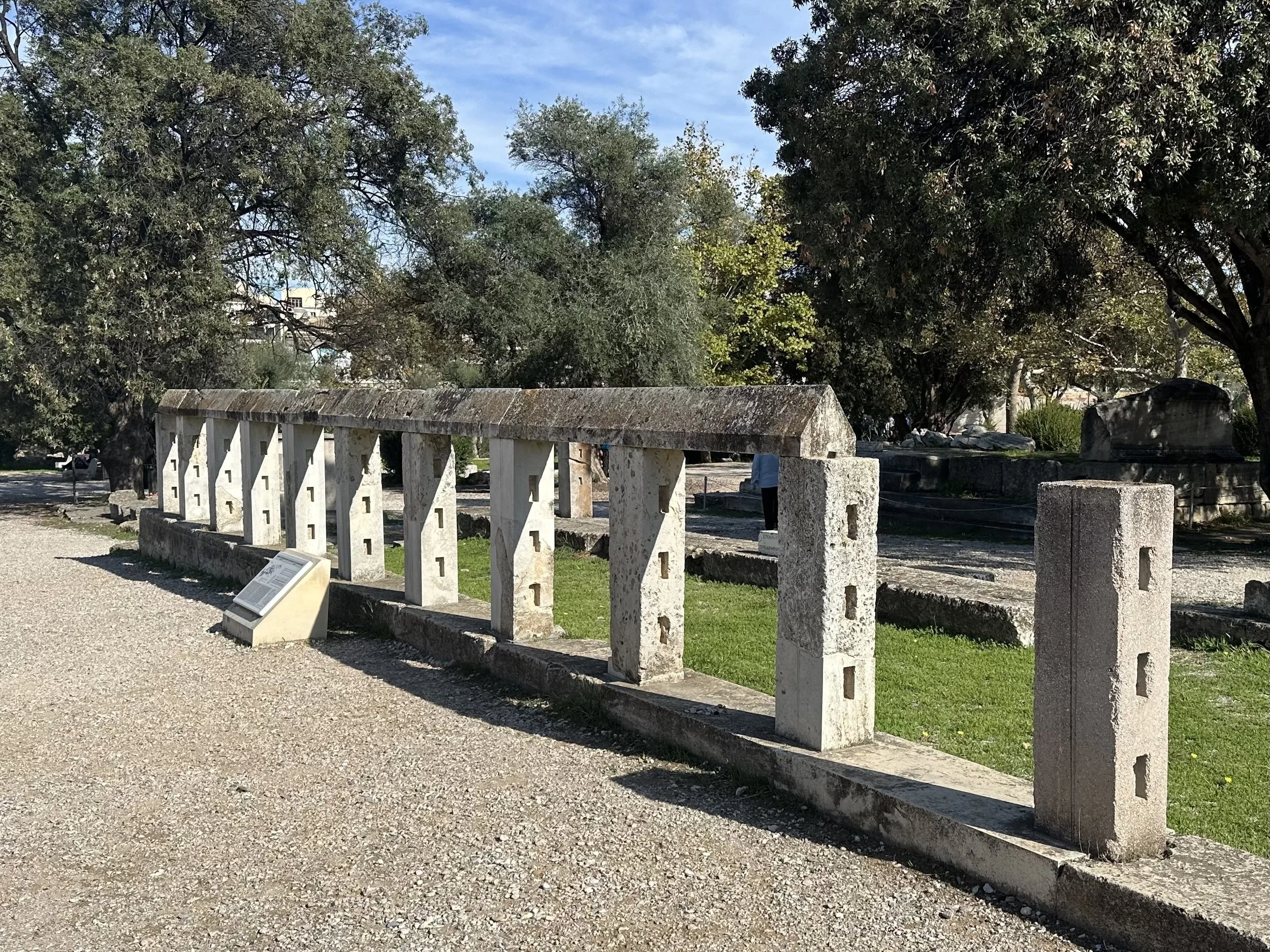
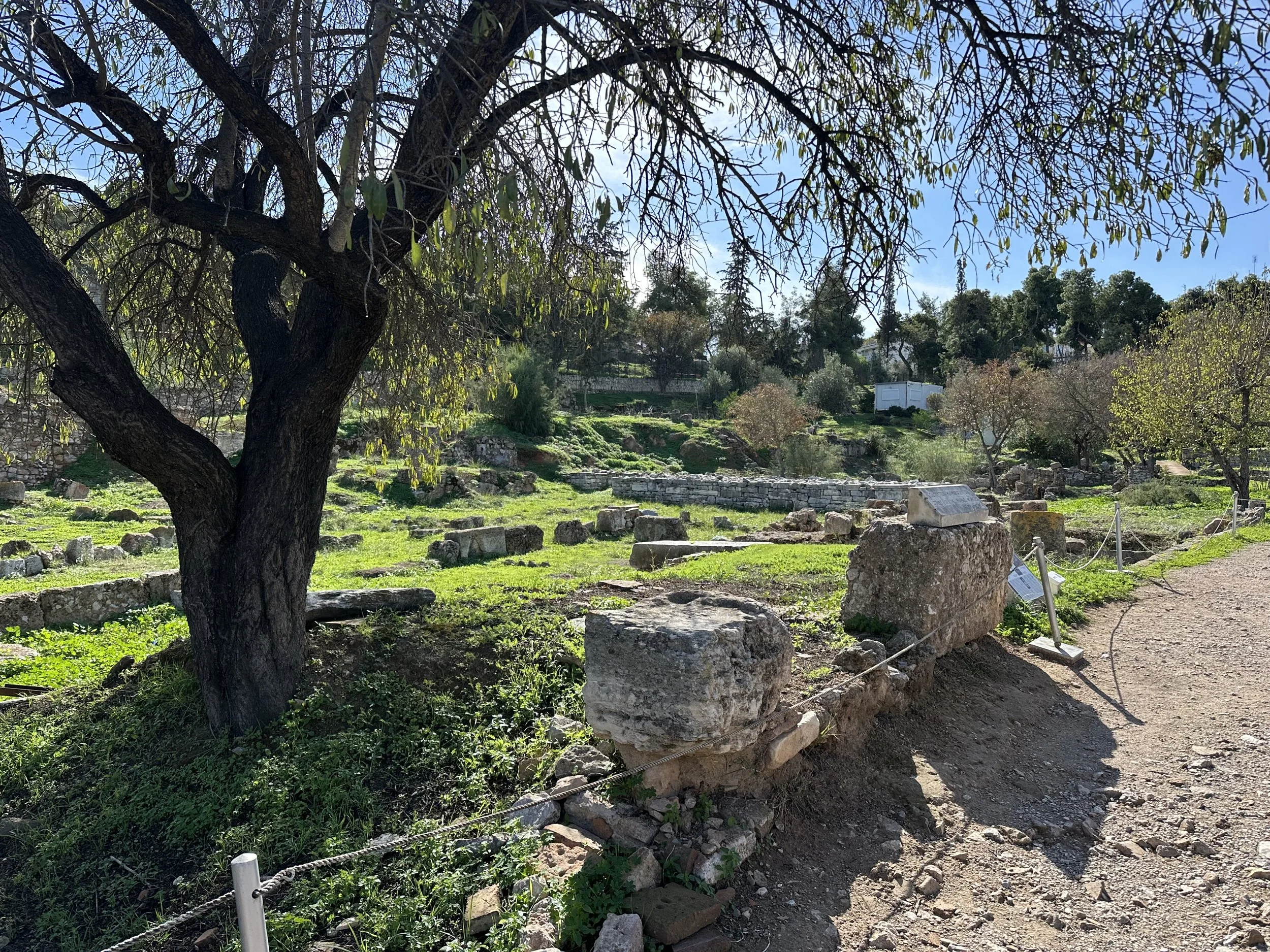
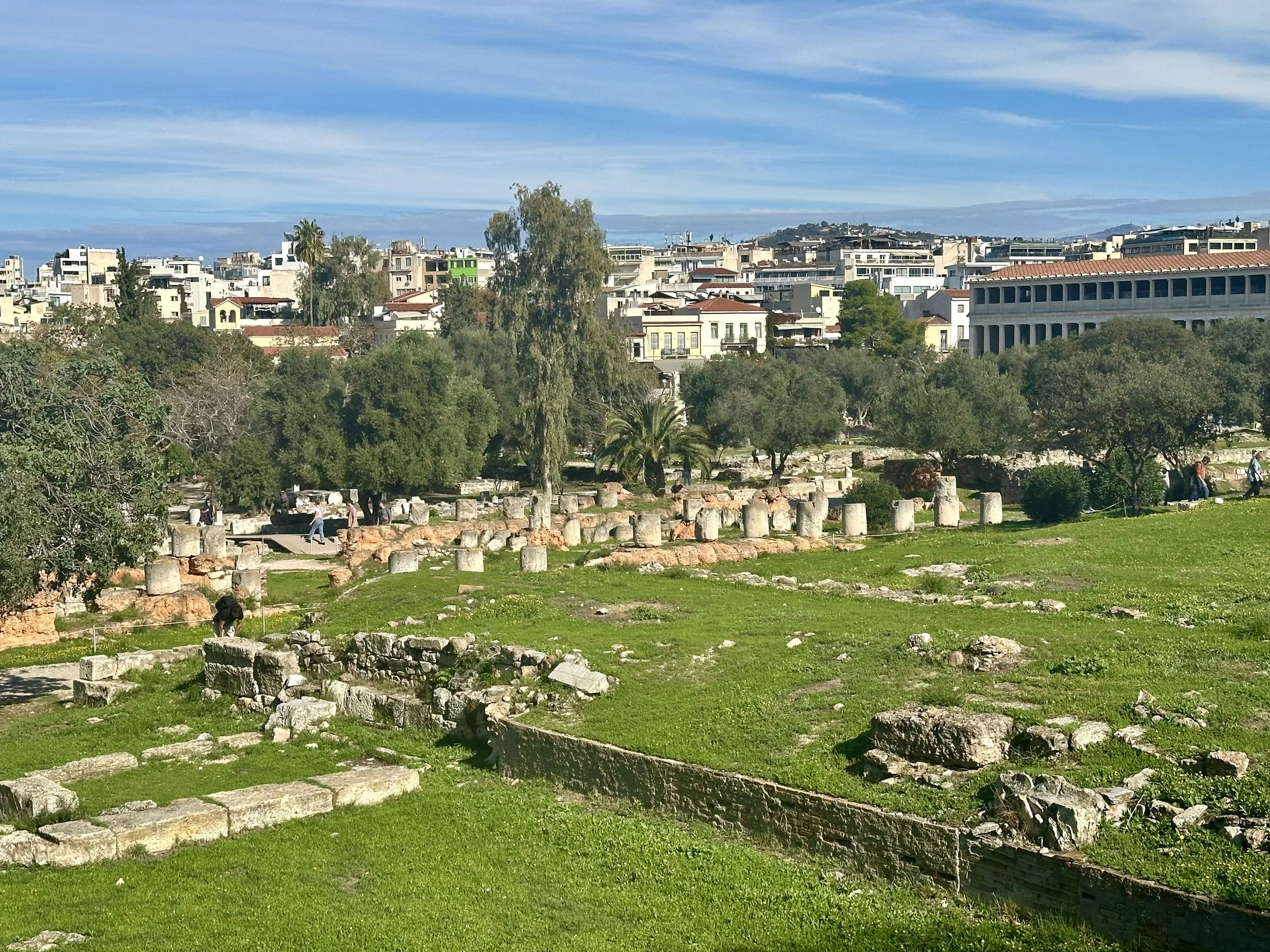
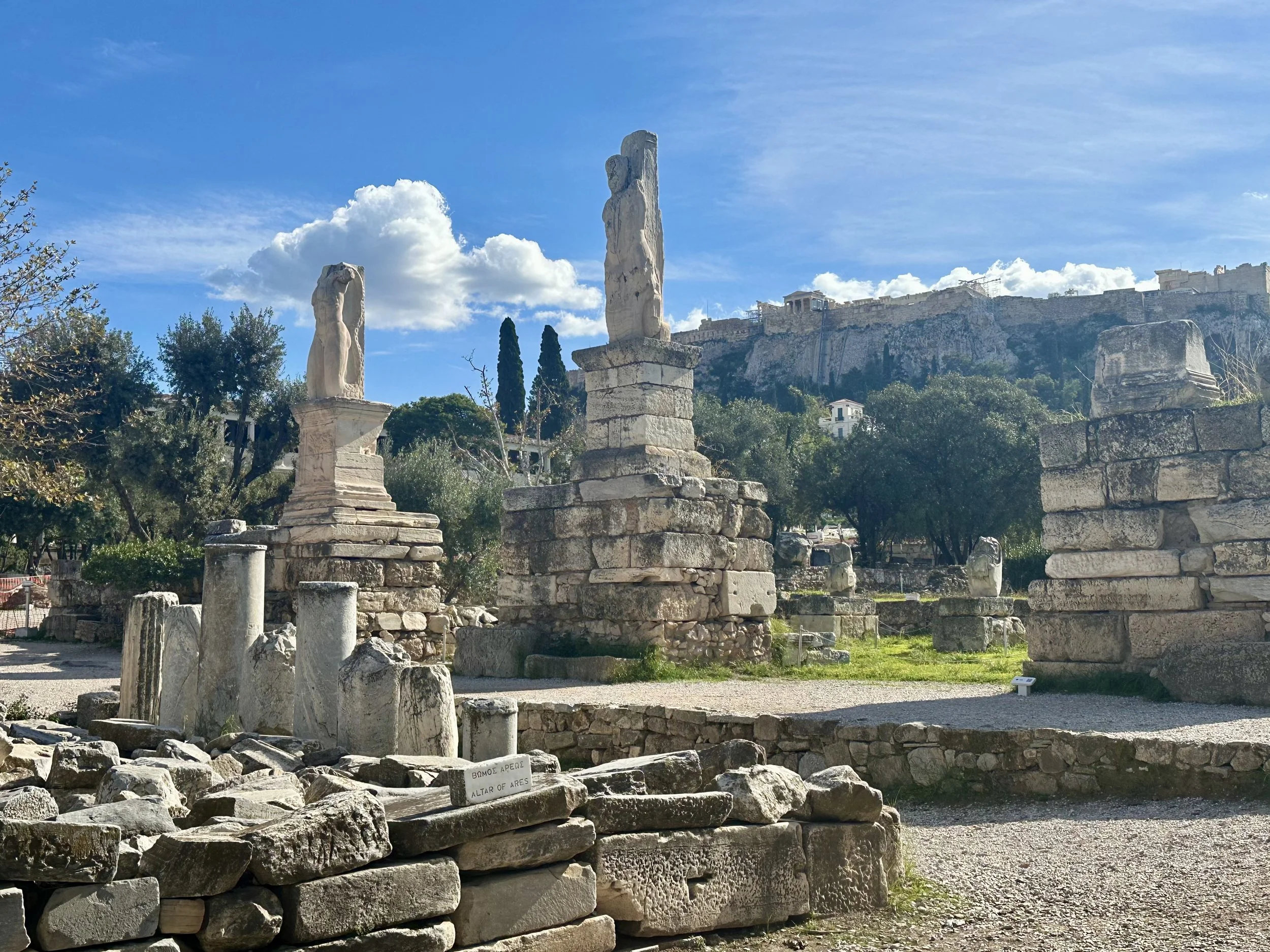
Stoa of Attalos
At the eastern end of the Agora stands the Stoa of Attalos. Built in 150 BCE and originally used as a covered market, it was completely reconstructed in the 1950s by the American School of Classical Studies at Athens (ASCSA). It now houses a museum and a research center.
It’s interesting that Americans played a prominent role in the excavation of the Agora, one of the largest archeological projects in Greece. With funding from John D. Rockefeller and other American donors, the ASCSA excavation began in 1931. About 250 modern houses were demolished, and tens of thousands of tons of earth were removed!
The exterior of the Stoa had a large double colonnade with Doric columns on the outside and Ionic on the inside. My favorite statue outside was the one of Aphrodite, with a “Come hither” pose.

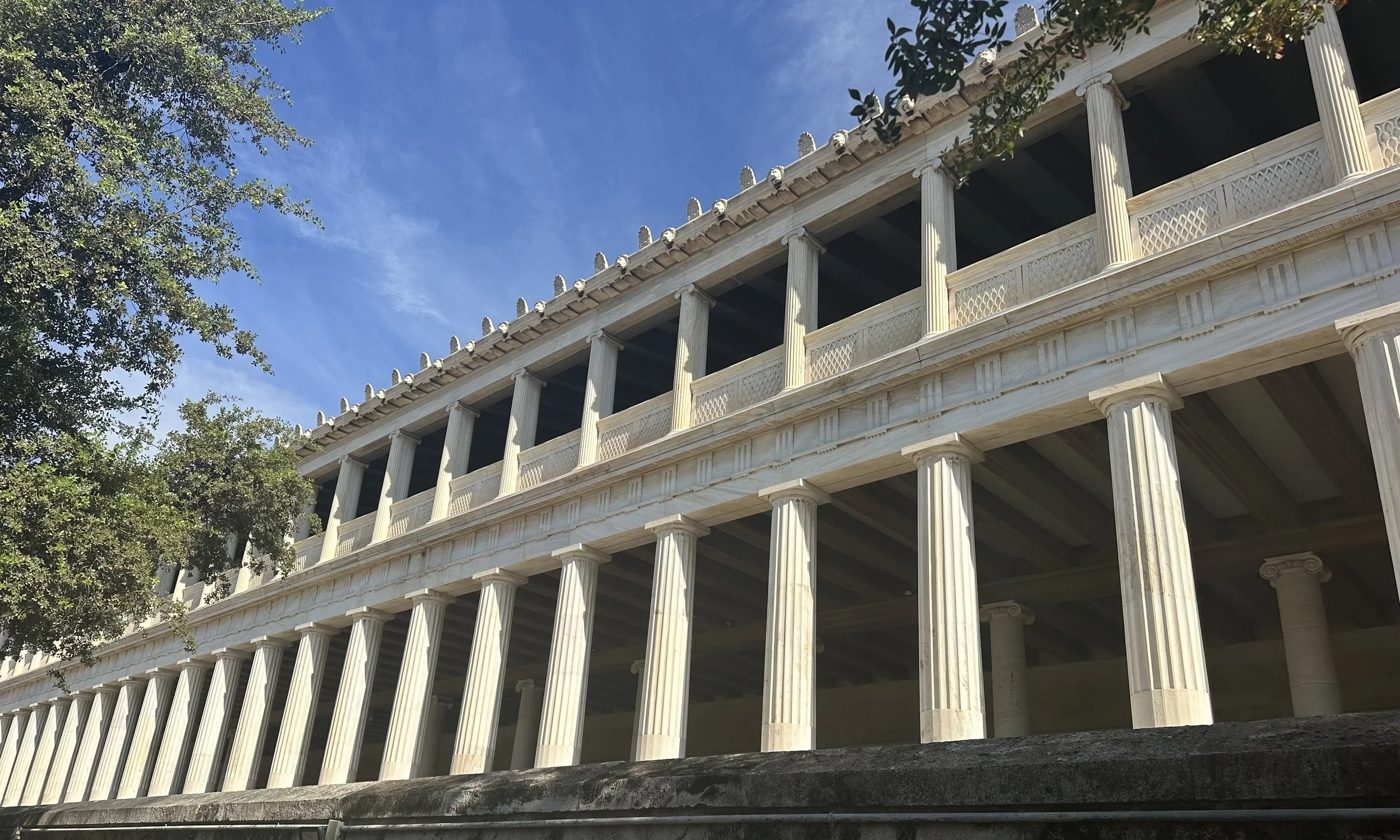
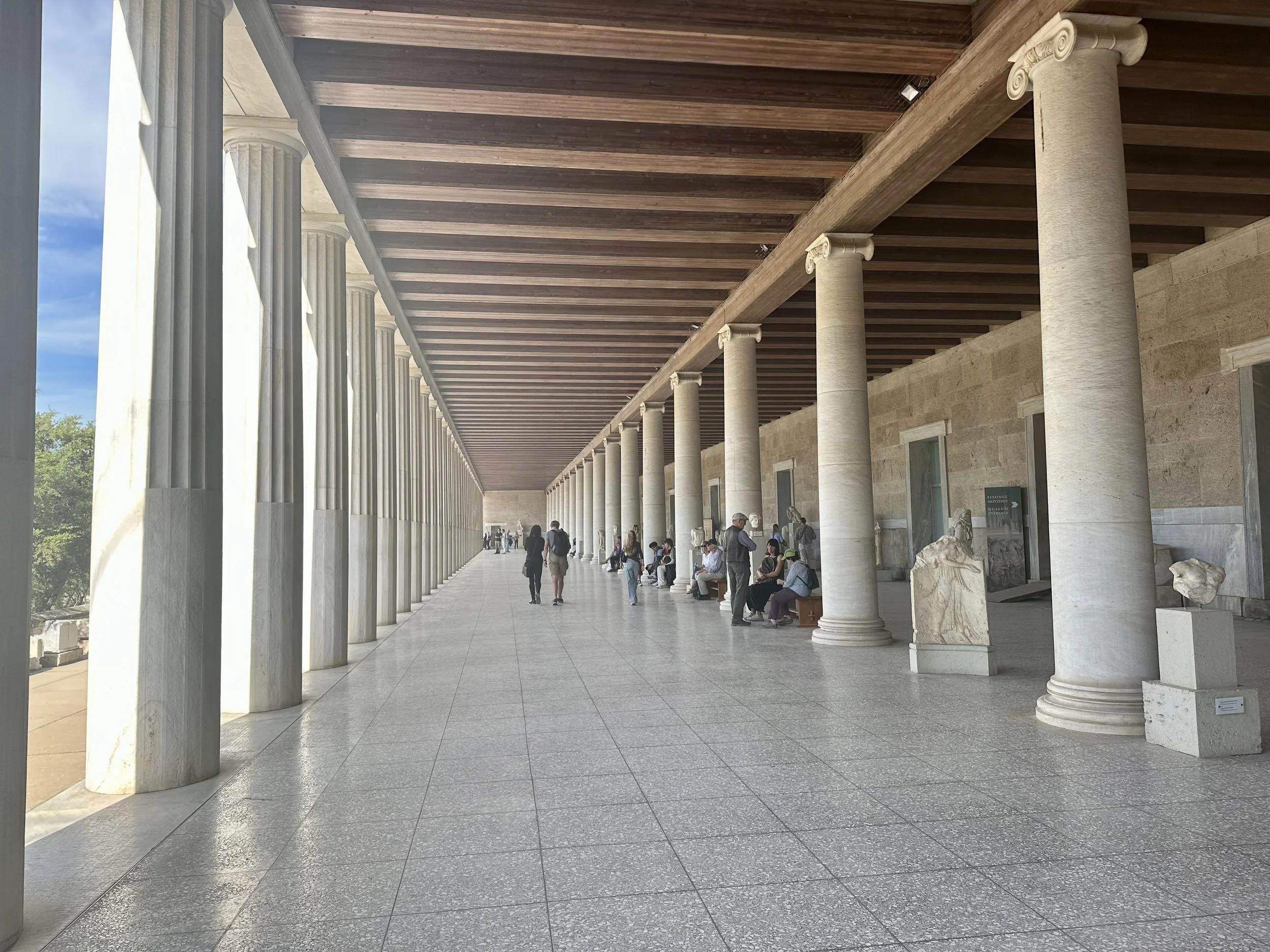


All of the artifacts uncovered in the excavation are stored in the Museum of the Agora. I was feeling a bit overwhelmed by the sheer volume of ancient artifacts we had already seen during our time in Greece, so I was grateful that Charis pointed out the most interesting items. (To see captions, view this post on a computer instead of a mobile device.)
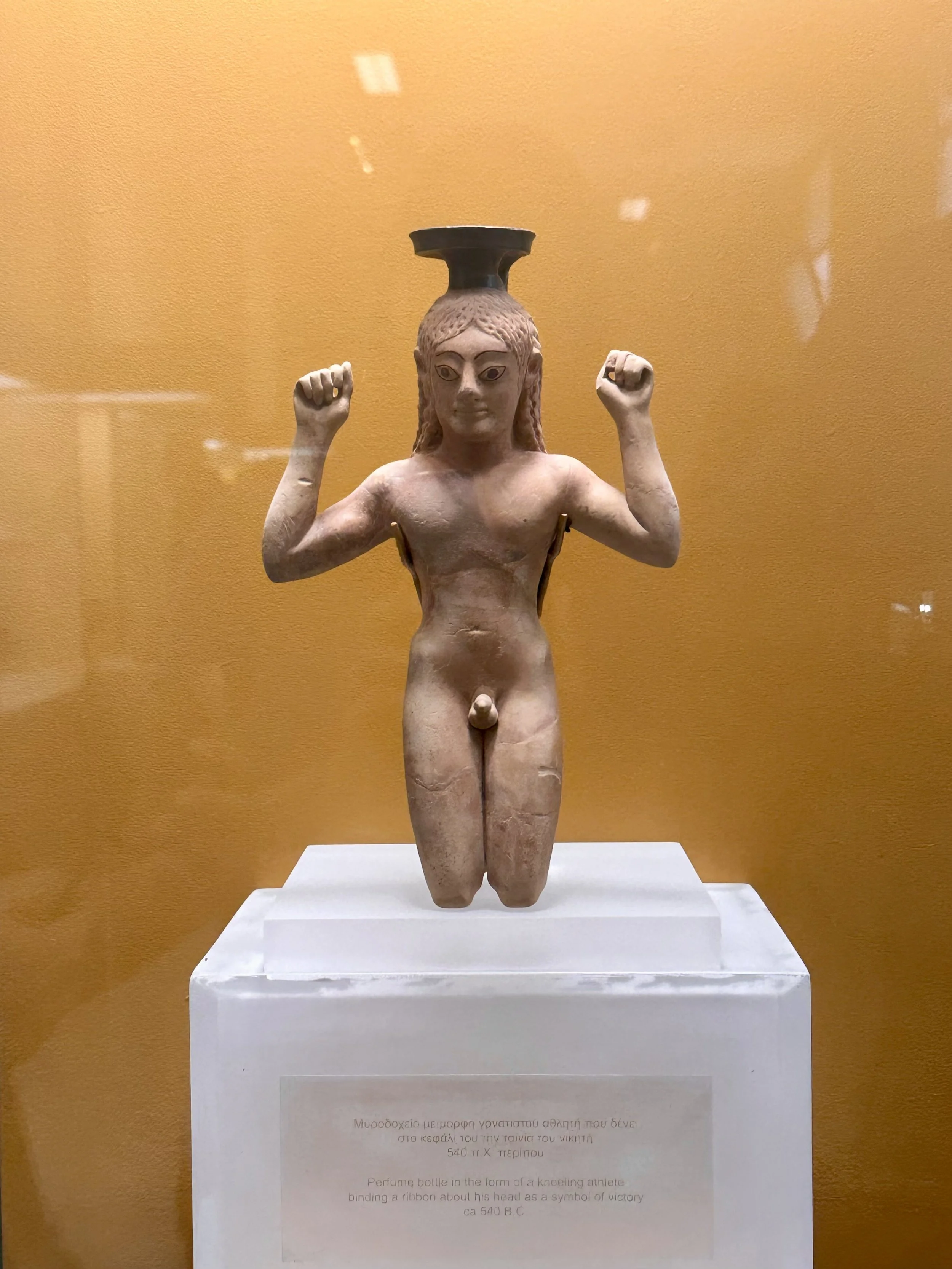

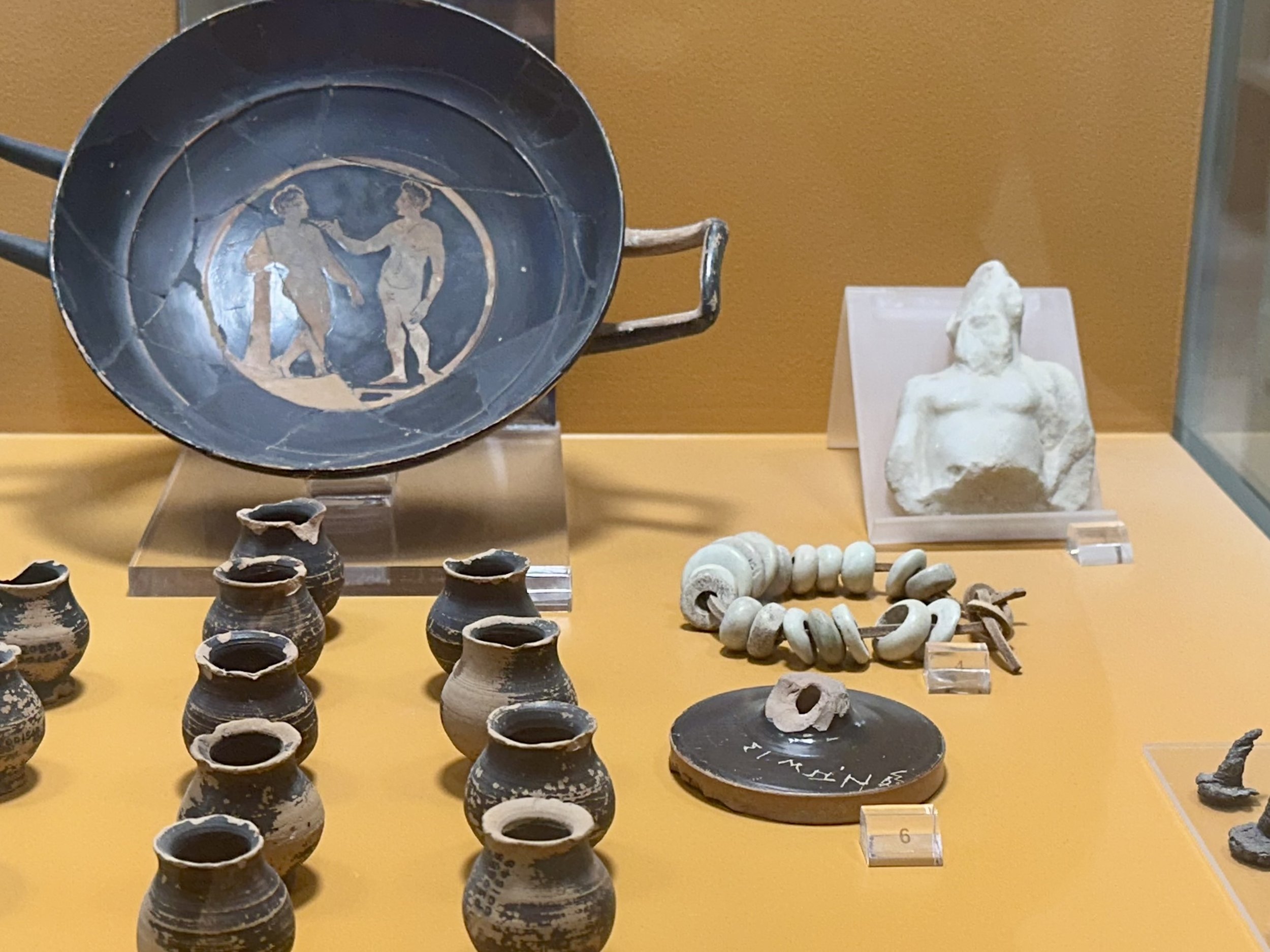
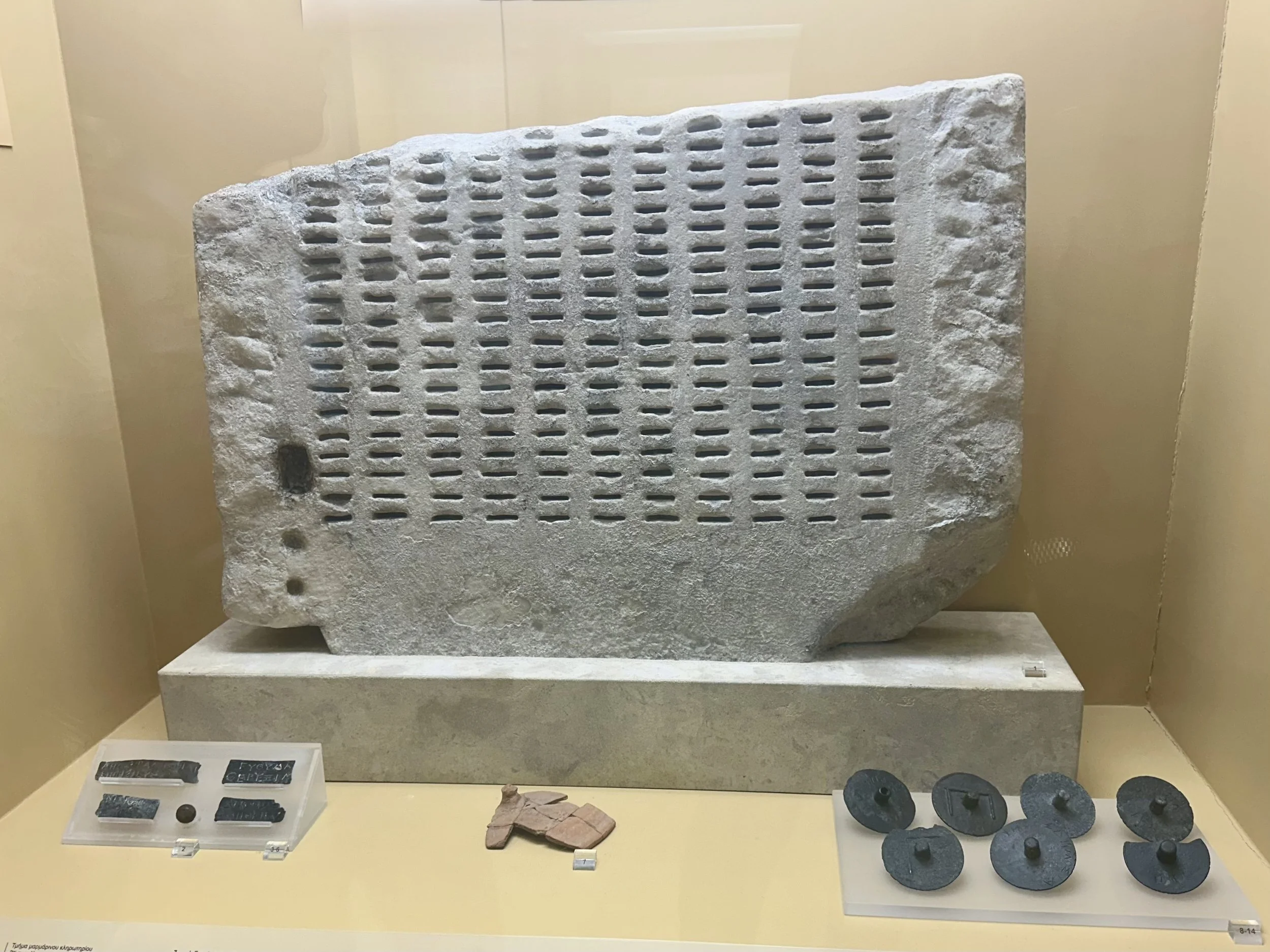
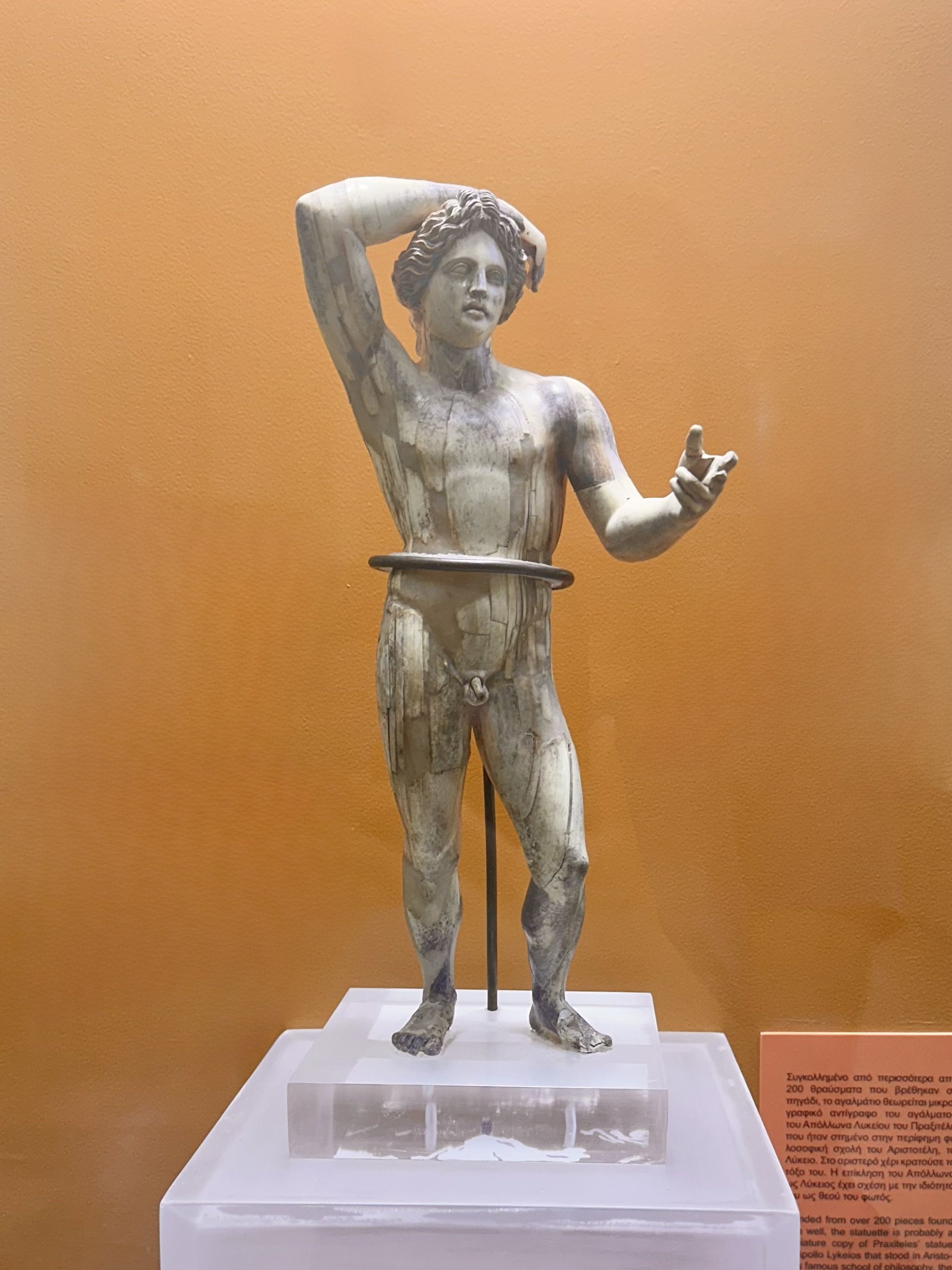
Modern Elements
The Athens-Piraeus Electric Railway cuts right through the Agora. Regrettably, many ancient remnants of the Agora were destroyed during railway construction in 1895. (The ASCSA excavation didn’t begin until 1931.) The Altar of the Twelve Gods was uncovered during track maintenance in 2011, and it was decided to prioritize present day transportation needs and leave the tracks in place. One small corner of the Altar’s foundation is visible at the base of the wall along the train tracks.
In the center of the Agora, two bronze statues are in conversation. The monument is titled Confucius and Socrates: An Encounter. Create by Chinese artist Wu Weishan, the statue was a gift from the Chinese government in 2021. The famous Chinese and Greek philosophers never really met, of course; they lived on different continents and in different centuries. But I like the symbolism: two great minds, East meeting West. I imagine Socrates and Confucius would have found a LOT to talk about.
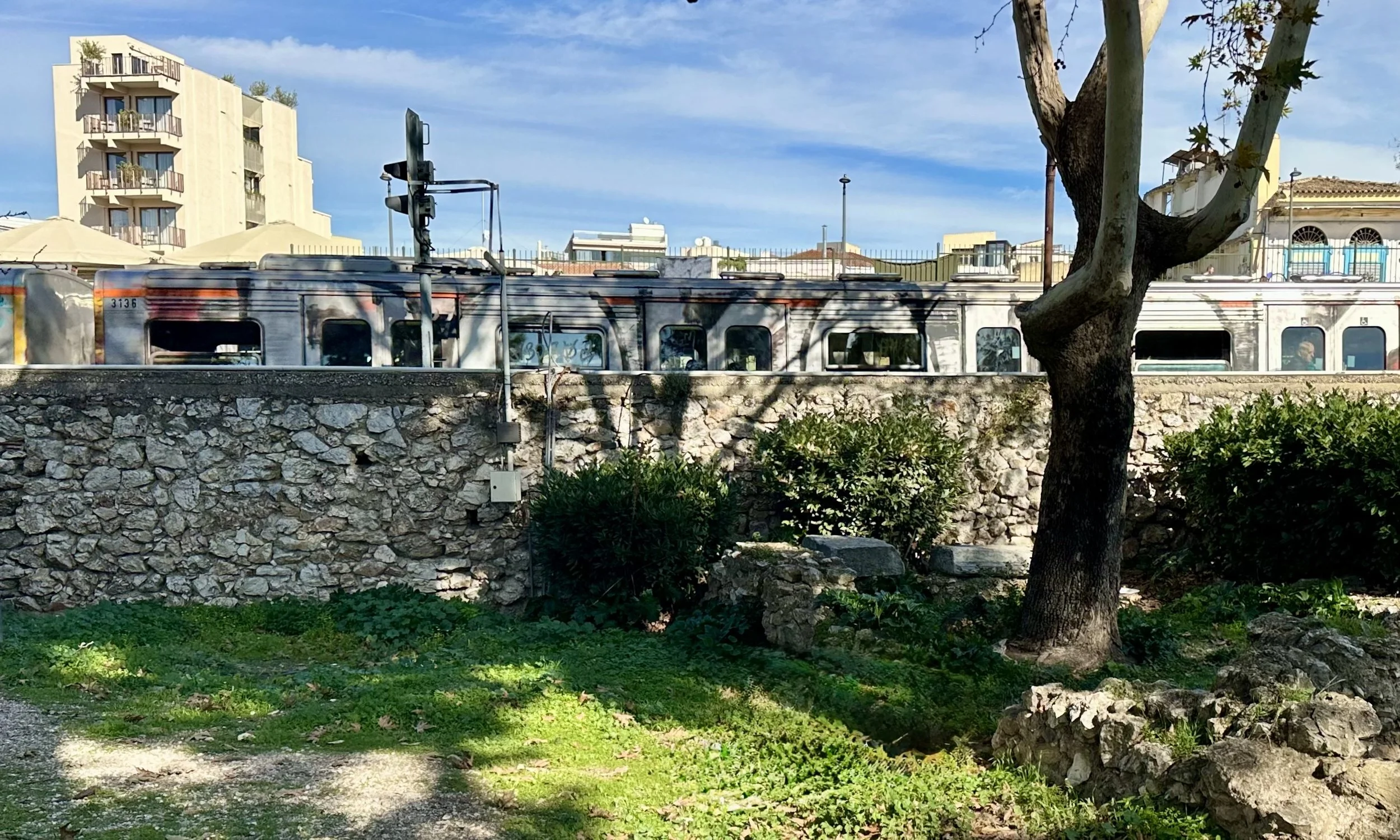
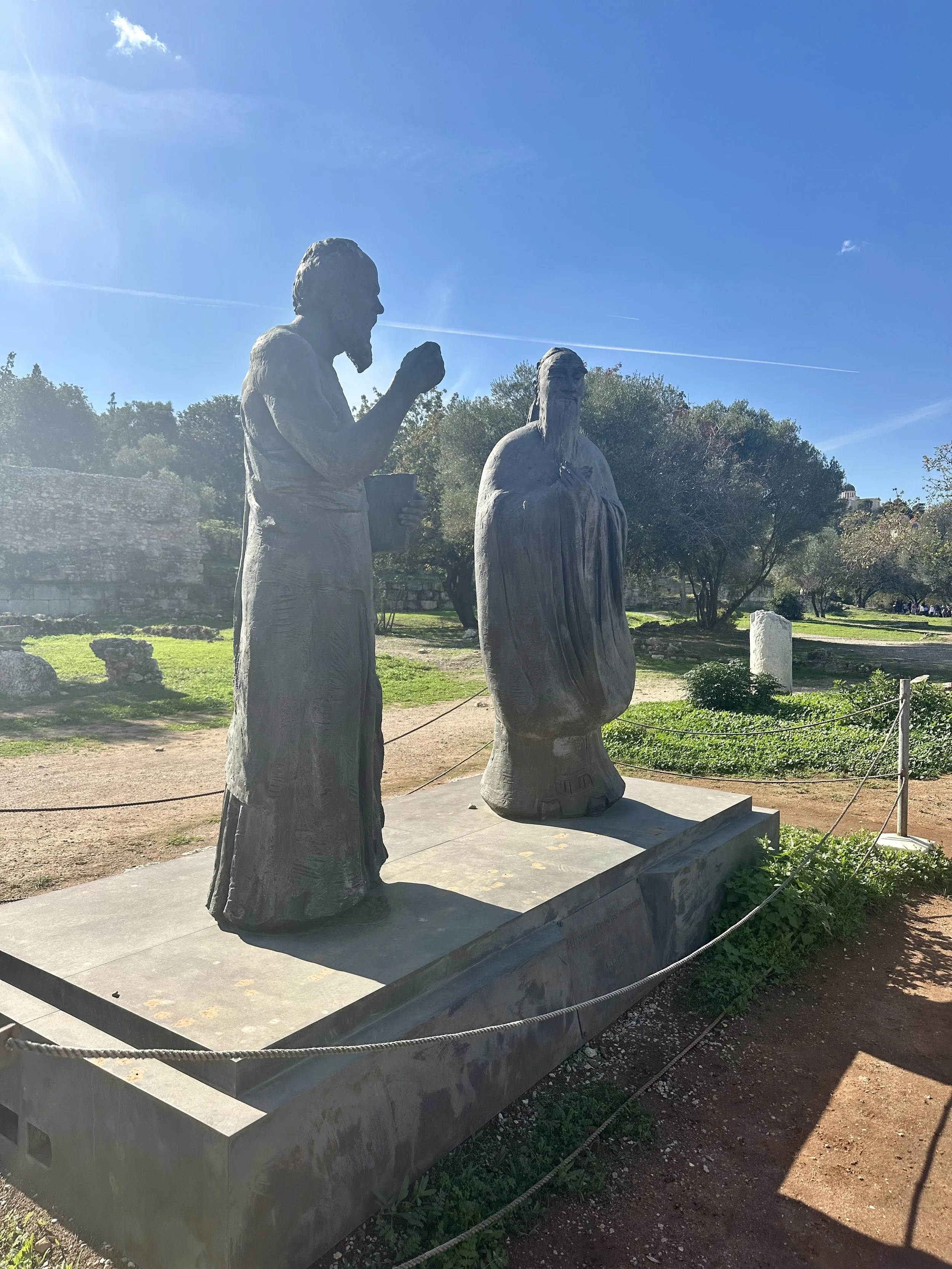
I’m so glad we had Charis to guide us through the Agora, since it was enormous and didn’t have much signage. Plus, Charis had an endless supply of great stories and boundless enthusiasm for bringing history to life.